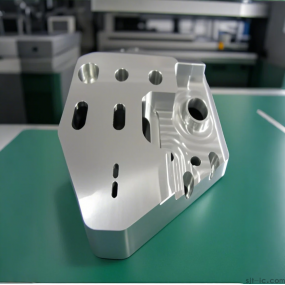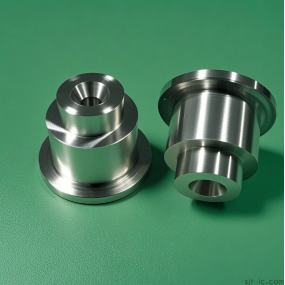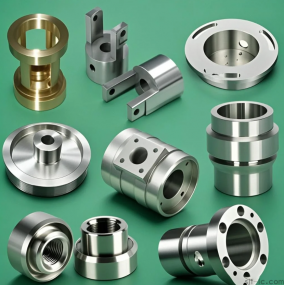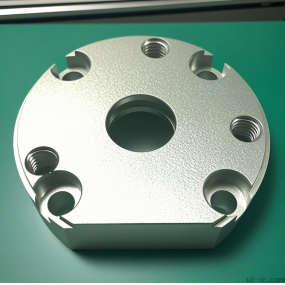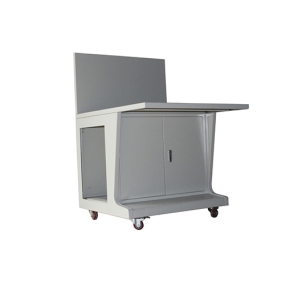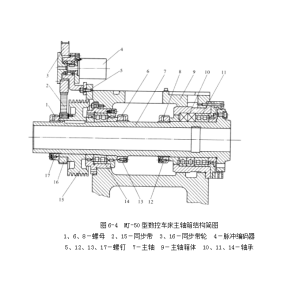The current development of cutting tools and related technologies in Shenzhen Machinery Processing Plant is changing with each passing day. In recent years, the cutting process has entered a stage of high-speed cutting under the joint promotion of numerical control technology and tool technology. In recent years, tool materials and coating technology have been greatly developed. For example, the use range of PCD, CBN superhard tools and ceramic tools has been expanding. As the main force of current high-speed cutting, the cutting performance of coated carbide tools has been greatly improved. In the past two decades, the cutting speed has increased by 5 to 10 times, and the production efficiency has increased by 50% to twice. One of the characteristics of high-speed cutting is that when the cutting speed rises to a certain extent, the cutting force decreases with the increase of cutting speed due to material softening and other reasons. At the same time, because the cutting chip takes away most of the heat and even the temperature rise of the workpiece will be reduced. However, due to the limitations of tool material properties, the latter phenomenon can only be observed in machining aluminum alloys and soft materials with PCD tools. High-speed cutting is also suitable for hard cutting, dry cutting and heavy cutting, and is an effective means to improve cutting efficiency.
In modern machining, the cost of cutting tools generally accounts for only 3-4% of the manufacturing cost, but it has a much greater impact on the total manufacturing cost. In the planned economy era, machining enterprises set tool consumption quotas for cost control from the perspective of controlling processing costs. We have also mentioned the fact that some enterprises use low-performance welding tools on high-efficiency imported equipment, which cannot give full play to the performance of the equipment but causes greater waste. Some people have calculated that the production efficiency is increased by 20% and the manufacturing cost is reduced by 15%. Now most companies have calculated this account. Increasing tool input and using high-speed cutting to improve production efficiency to reduce total production costs is a step forward in cutting concepts.
 Advanced cutting tools are based on three major technologies: material, coating, and structural innovation. High-speed cutting tools mainly rely on advances in tool materials and coating technology. High-speed cutting can improve cutting efficiency, but it is not the only means. Structural innovation of tools is also an effective means to improve cutting efficiency. For example, Iscar‘s large-pass milling cutter has a cutting capacity of 3.5mm per tooth, and Seco‘s composite hole machining tool can complete drilling, boring, and end face chamfering in one pass. The technological progress of crankshaft machining is more convincing. The invention of crankshaft broaching has improved crankshaft machining efficiency tenfold. Now there is a more efficient crankshaft high-speed milling cutter, which can complete the processing of seven main necks in one pass. Dongfeng Motor Co., Ltd. has successfully developed crankshaft broaches and high-speed milling cutters for domestic automobile factories and successfully used them in production. In the 1980s and 1990s, Chengdu Tool Research Institute achieved a successful overtake of foreign well-known companies in high-strength oil pipe thread tools with independent intellectual property rights of tool design and process technology, coupled with the comprehensive application of coating, material and tool structure innovation technologies, when the individual technologies of coating and materials were not dominant. There are many examples that show that tool structure innovation is often more effective in improving cutting efficiency. To improve cutting efficiency, you can‘t just focus on high-speed cutting with the best (and often the most expensive) tools. In the current situation that our tool materials and coating technologies are still far behind those of foreign countries, focusing on tool structure innovation is often a more effective and feasible means to improve cutting efficiency. The use of various means, including high-speed cutting and tool structure innovation, to achieve high-speed cutting is another advance in cutting concepts.
Advanced cutting tools are based on three major technologies: material, coating, and structural innovation. High-speed cutting tools mainly rely on advances in tool materials and coating technology. High-speed cutting can improve cutting efficiency, but it is not the only means. Structural innovation of tools is also an effective means to improve cutting efficiency. For example, Iscar‘s large-pass milling cutter has a cutting capacity of 3.5mm per tooth, and Seco‘s composite hole machining tool can complete drilling, boring, and end face chamfering in one pass. The technological progress of crankshaft machining is more convincing. The invention of crankshaft broaching has improved crankshaft machining efficiency tenfold. Now there is a more efficient crankshaft high-speed milling cutter, which can complete the processing of seven main necks in one pass. Dongfeng Motor Co., Ltd. has successfully developed crankshaft broaches and high-speed milling cutters for domestic automobile factories and successfully used them in production. In the 1980s and 1990s, Chengdu Tool Research Institute achieved a successful overtake of foreign well-known companies in high-strength oil pipe thread tools with independent intellectual property rights of tool design and process technology, coupled with the comprehensive application of coating, material and tool structure innovation technologies, when the individual technologies of coating and materials were not dominant. There are many examples that show that tool structure innovation is often more effective in improving cutting efficiency. To improve cutting efficiency, you can‘t just focus on high-speed cutting with the best (and often the most expensive) tools. In the current situation that our tool materials and coating technologies are still far behind those of foreign countries, focusing on tool structure innovation is often a more effective and feasible means to improve cutting efficiency. The use of various means, including high-speed cutting and tool structure innovation, to achieve high-speed cutting is another advance in cutting concepts.
After using advanced tools to improve cutting efficiency, two new problems are often highlighted in Shenzhen machinery processing plants: first, the effect of improving cutting efficiency is greatly diluted by a large amount of non-cutting time, and second, the cost of advanced tools is overwhelmed when the processing equipment is not very advanced. The Japanese company MARZAK said that their machining center is only 30% of the time to create benefits for the company. The cutting time automatically recorded on the imported Swiss machining center of Dongfang Steam Turbine Factory is only about 30%. Cutting technology is constantly evolving, and people‘s understanding is constantly deepening: in the effort to improve machining efficiency, only high-performance tools are not enough, and the potential to improve cutting productivity through cutting application technology is still great.
The cutting process is very complex, and the cutting process is affected by a large number of random factors. It is difficult to simply describe it accurately with some formulas and theorems. However, metal cutting as a traditional technology has its own laws and can be grasped. The key is to use live cutting technology to solve practical problems. In cooperation with the China Knife Association 20 Project, we asked Zhao Bingzhen Research Institute, a senior expert in the tool industry, to compile a textbook on "Tool Application Technology Basics". Our goal is to train talents who understand the basic knowledge and latest development of modern cutting technology, understand the basic concepts of cutting application technology and can use the above technologies and ideas to solve practical problems - we call them cutting engineers and a new generation of tool kings.
As mentioned earlier, it is not enough to rely solely on advanced tools to further improve cutting efficiency. We should also master and apply technologies related to the cutting process to comprehensively improve production efficiency.
At the 2005 China Tool Association Work Conference held in Xiamen in May this year, Dongfang Steam Turbine Factory introduced the experience of comprehensively applying cutting application technology to improve cutting efficiency in an all-round way. This year, the factory has worked hard to promote advanced tools, and the promotion of indexable tools alone has increased production efficiency by 30%. Then they have worked hard on tool structure innovation, cooperating with Zhuzhou Diamond Cutting Tool joint stock company to develop advanced tools, and also modifying old equipment to use advanced tools to improve production efficiency. Recently, they have optimized the process configuration of the whole factory, strengthened management, carried out network programming and computer simulation of the cutting process to further improve production efficiency. In the words of Chief Craftsman Wang Zheng, "Ask for benefits from the other 70% of the time". There are many ways to reduce non-cutting time, such as off-machine tool adjustment, quick tool change, random measurement, multi-station processing, setting up loading and unloading stations, purchasing reliable equipment to reduce maintenance downtime, and so on.
The use of advanced tools, while also optimizing the entire machining process through management and application of relevant technologies, to achieve efficient machining is the third recent advance in cutting concepts.
The use of advanced cutting tools in Shenzhen machinery processing plants should also pay attention to the reasonable "matching" with processing equipment. We have mentioned that welding tools on good equipment are not matched, and it is also unreasonable to blindly pursue the best (and often the most expensive) cutting tools on ordinary equipment. Many processing companies have issued calls for the price of imported tools to be overwhelmed. What should we do? Our advice is: carry out tool structure innovation, improve tool use conditions, choose tool materials and coatings rationally, don‘t just focus on the "best" (most expensive) tools, and improve production efficiency. Only high-performance tools and high-speed cutting are available. After years of construction and technological transformation, a number of state-owned, sub-division and private tool enterprises have developed a series of high-performance carbide materials and coated tools, which can be reasonably selected by processing enterprises according to specific conditions. Then there are tool structure innovation and process reform, as well as management tools and related technologies are also effective means to improve production efficiency. To put it more clearly, don‘t just focus on using the best tools. At present, we should pay more attention to the efficiency of cutting application technology to 70% of the time.
At present, domestic car production, mold manufacturing, aerospace and other fields still use a large number of imported tools. There is still a big gap between our country and foreign countries in the basic technology of materials and coatings and tool structure innovation, and there is still a long way to go to catch up with the world‘s advanced level. But if you only see this and ignore the important field of cutting application technology, it is invisibly exaggerating the gap between our cutting technology and foreign countries. We need to develop both basic technology and application technology. At present, we should start with cutting application technology, work hard on tool structure innovation, learn to make good use of the introduced and self-developed coating technology and advanced tool material technology, and comprehensively apply technology and management means to improve processing efficiency and accelerate catching up with the world‘s advanced level.


 Spanish
Spanish Arabic
Arabic French
French Portuguese
Portuguese Belarusian
Belarusian Japanese
Japanese Russian
Russian Malay
Malay Icelandic
Icelandic Bulgarian
Bulgarian Azerbaijani
Azerbaijani Estonian
Estonian Irish
Irish Polish
Polish Persian
Persian Boolean
Boolean Danish
Danish German
German Filipino
Filipino Finnish
Finnish Korean
Korean Dutch
Dutch Galician
Galician Catalan
Catalan Czech
Czech Croatian
Croatian Latin
Latin Latvian
Latvian Romanian
Romanian Maltese
Maltese Macedonian
Macedonian Norwegian
Norwegian Swedish
Swedish Serbian
Serbian Slovak
Slovak Slovenian
Slovenian Swahili
Swahili Thai
Thai Turkish
Turkish Welsh
Welsh Urdu
Urdu Ukrainian
Ukrainian Greek
Greek Hungarian
Hungarian Italian
Italian Yiddish
Yiddish Indonesian
Indonesian Vietnamese
Vietnamese Haitian Creole
Haitian Creole Spanish Basque
Spanish Basque

